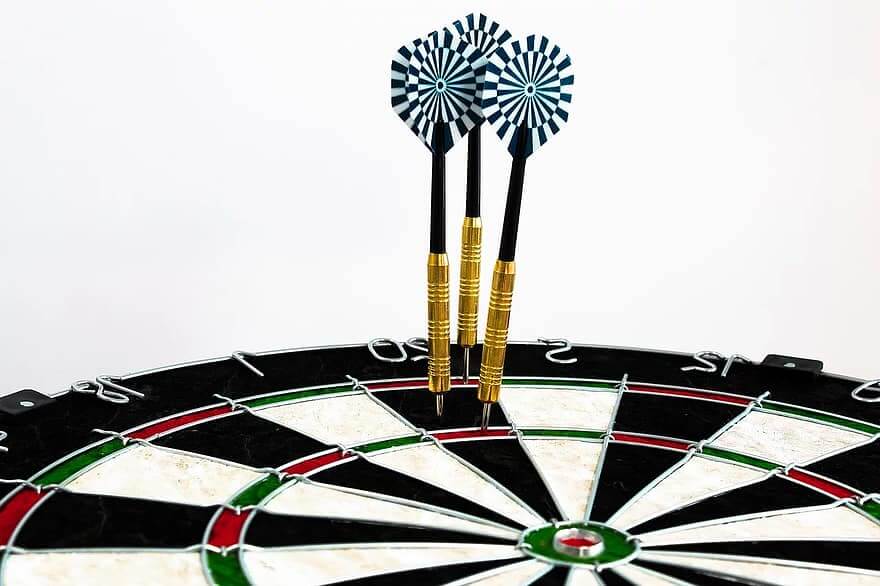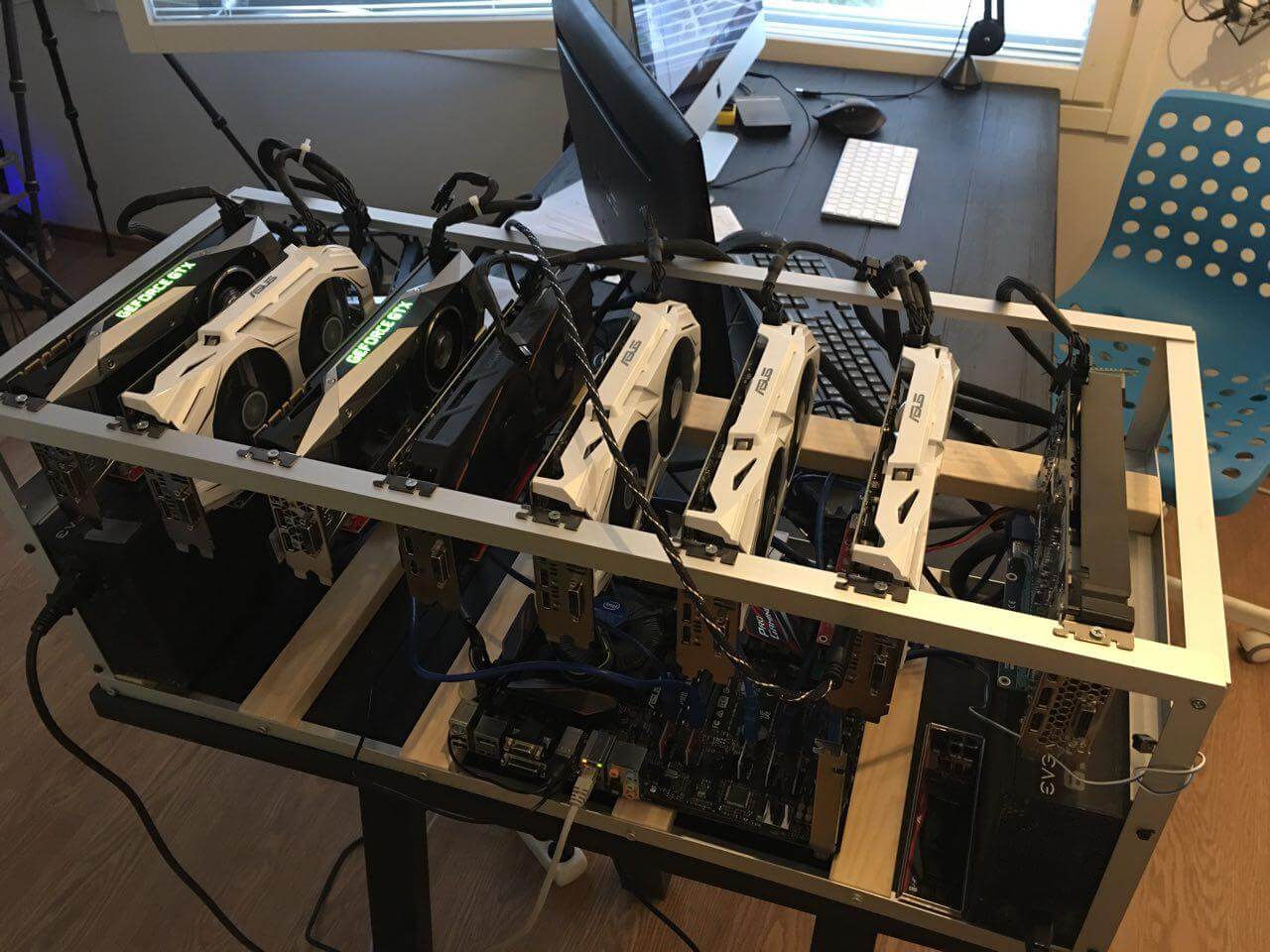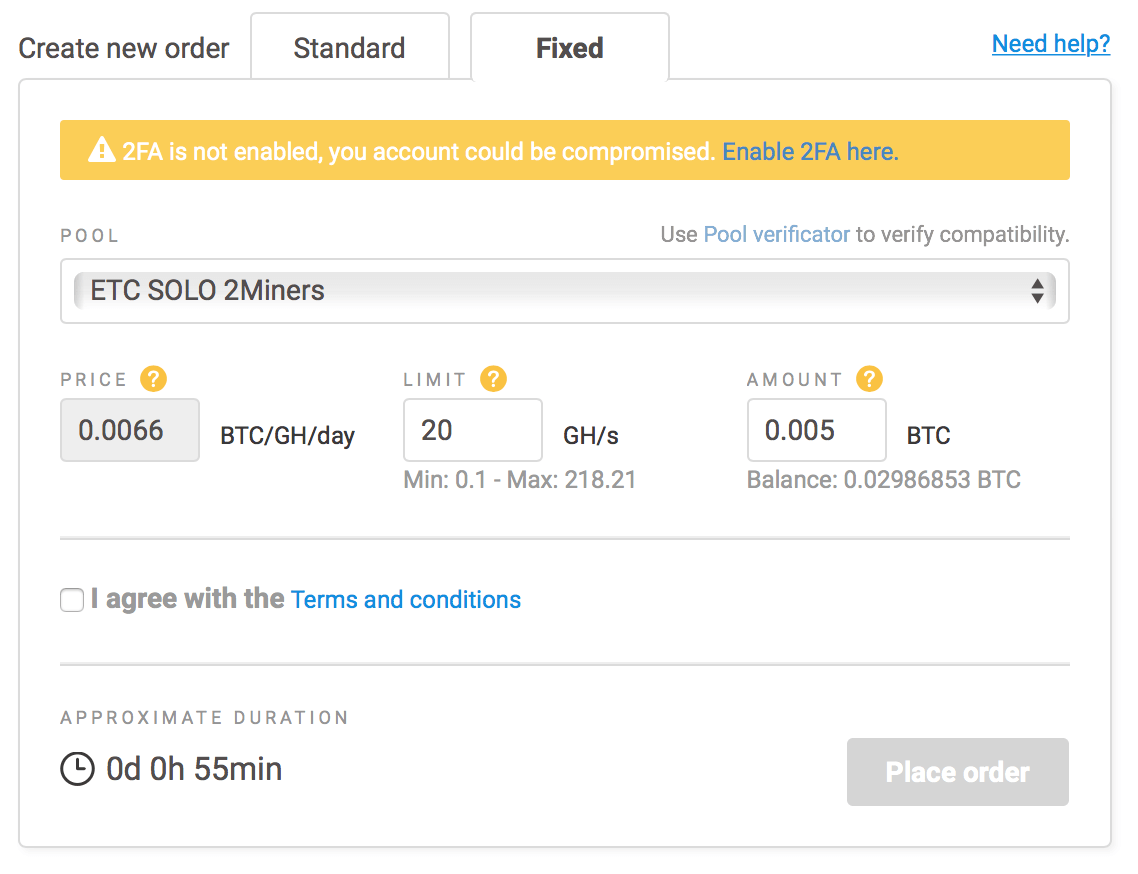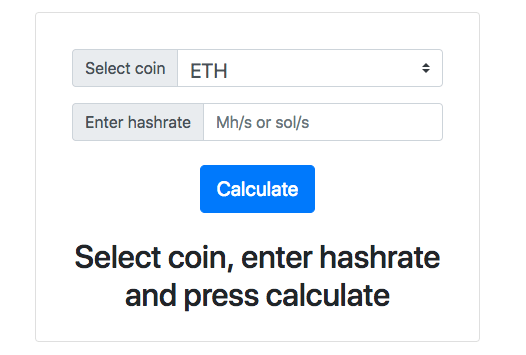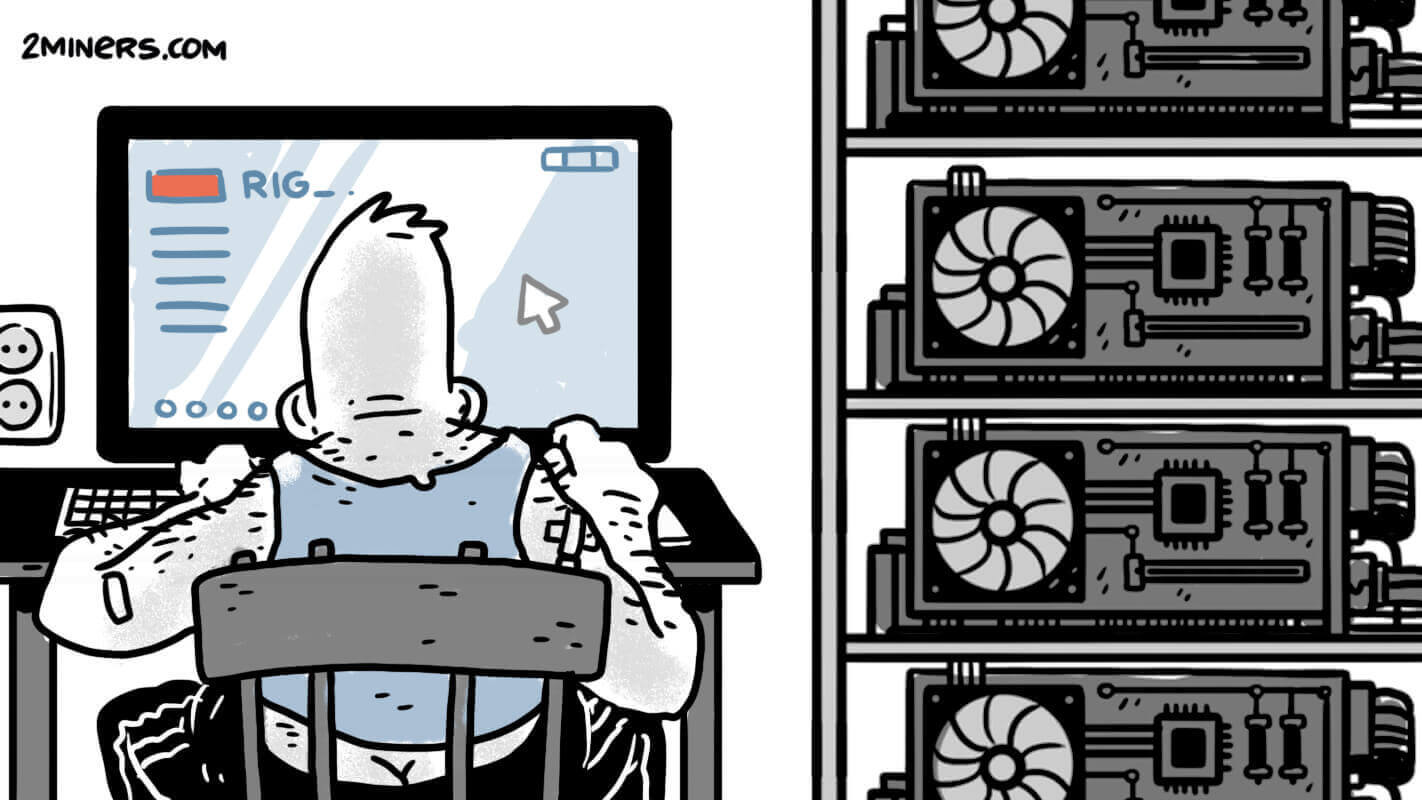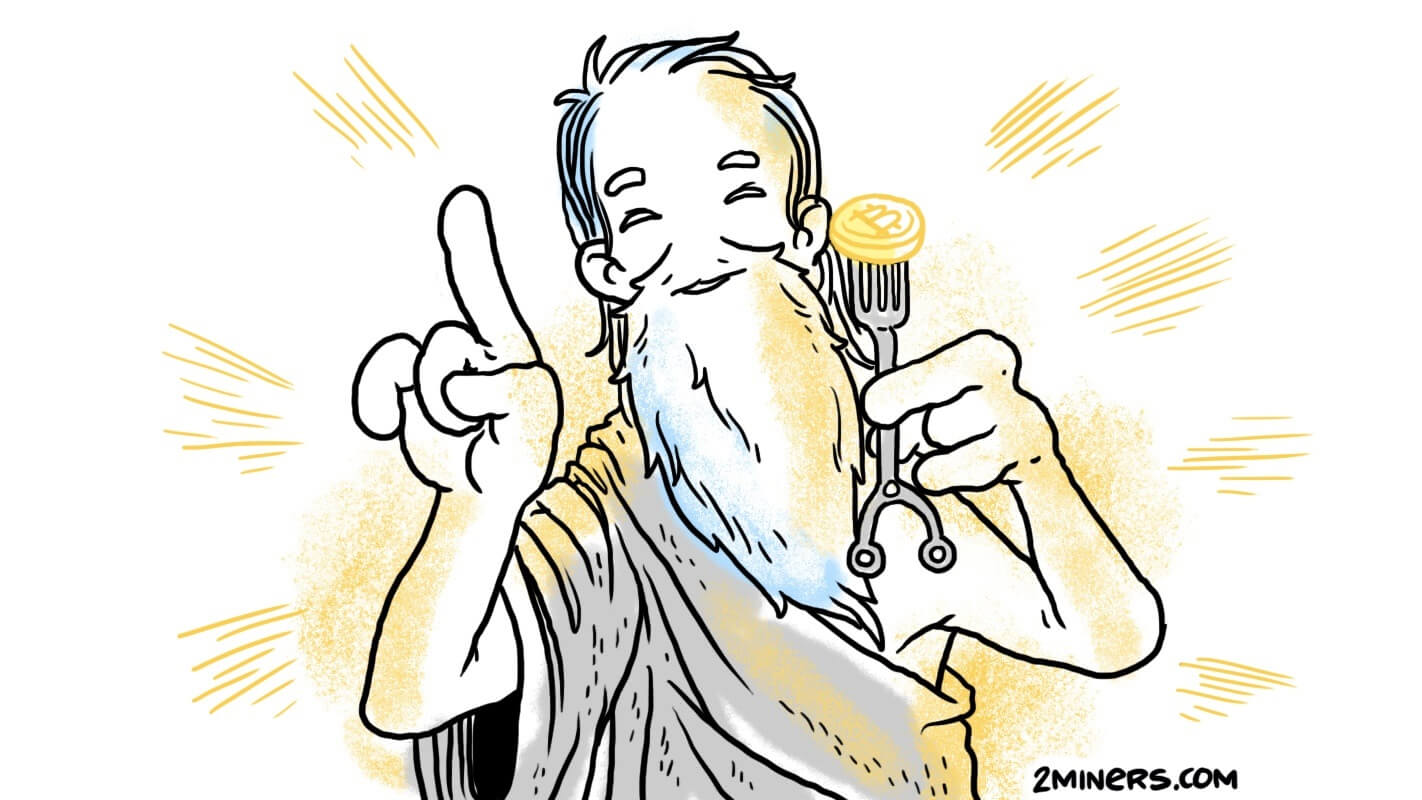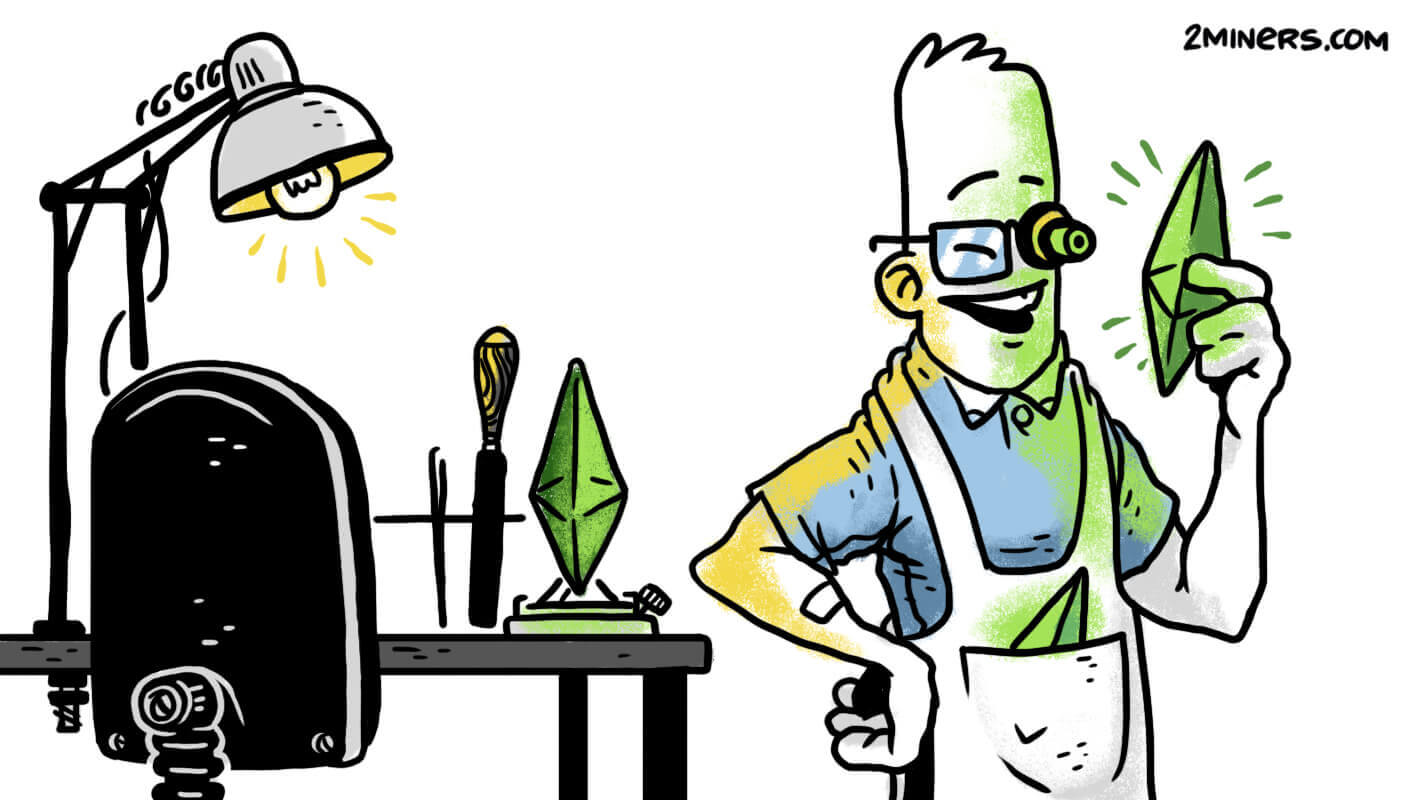It just happens to be that mining is also a sort of a game or a competition, in its own way. And we will tell you why. The GPU miner rigs or ASIC devices of one miner are going through billions of combinations searching for the desired block solution. The moment fortune smiles at him and one of his devices find the right solution of the block; the miner gets the reward.
The difficulty of mining the most popular cryptocurrencies is so high that the miner can’t deal with it on his own. But if he calls his friends to help, and they will, there’s a chance they will find the right solution pretty fast.
They will split the reward in this case. That’s how the mining pools are born.
In cases with different cryptocurrencies for each block found you get different amounts of coins. For instance, for a block of Zcash (ZEC) miner gets 10 coins (currently $2400), for a block in Ethereum network – 3 ETH coins or $900.
There are also lower rates, for example, a block of Pirl will give you 10 coins ($4), Ethereum Classic – 5 coins ($84). Ah, don’t forget about His Majesty Bitcoin…12.5 coins or $82530!
Contents
So Why SOLO Mining is a Game?
Let’s imagine you are rolling the dice and you need to get 6. In the perfect world, if you roll it many times, number 6 should appear in 16,67% of cases, i.e., every sixth time (since the dice has six faces), right?
In real life, you can get lucky, and the number 6 will appear a few times in a row if you experiment.
The process of solution searching in mining is equivalent to rolling the dice, even though it sounds strange. You are competing with the whole world, but the point doesn’t change.
Let’s say you have one video card, and your friend has 6-GPU Mining Rig, this is equivalent to you having one dice, and him having six dices. You roll each dice once and try to get six.
Apparently, your friend has much more (nine times more) chances of getting six, but it doesn’t mean you can’t win. Let’s suppose that the reward for one block is $70. You can unite with your friend and find the block together, and divide the gainings in a fair way – you get $10, and his part is $60.
Or you can search for the block on your own, and then you get the whole $70 for yourself for the found block. In the perfect world, it would take ten times more time, than if you cooperate with your friend, but our world isn’t ideal.
How Can a Miner Try His Luck?
Own Capacities
The more mining devices you have, the higher chance you have to find the cherished block. The possibility of finding this particular block is only higher when the network difficulty of the cryptocurrency that you are mining is lower.
Renting Capacities
We rent capacities on Nicehash or MiningRigRentals and direct them at the solo pool. The tactics can be different: you can send 100GH/S for an hour, or you could go for 10GH/S for 10 hours. One decides which one based on his own experience. By the way, the real players take one TH/S or more.
Renting of capacities on Nicehash is also an art, at different times of the day the prices vary, it’s due to Nicehash being a market with sellers on the one side and buyers on another.
Some people put a knowingly low price thinking “it may work” and based on our experience such orders work very often.
Here, while the market price is 0.0085, there are two orders twice cheaper, and please, pay particular attention to the order with INFINITE speed, i.e., someone is ready to rent ANY number of farms for this money.
At Nicehash you can rent capacities for different algorithms: Dagger Hashimoto for cryptocurrencies like ETH and similar, Equihash for ZEC and similar, Scrypt for LTC, SHA 256 for Bitcoin or Bitcoin Cash.
Here, for example, cool guys took 750 GH/S, playing the big game.
How to Calculate Your Chances?
Let’s take Ethereum as an example. We go to Whattomine, choose Ethash algorithm, check out the reward for one block – it’s 3 ETH coins. Then we start to increase the hashrate until we find the value at which the calculator shows 3 coins per day.
Currently, this value is ± 17 450MH/S (17.45GH/S).
One more time – what does that mean? It means that in a perfect world with such hashing power you would find one block daily (3 ETH coins = $900) Look at the table below, at 17.45 GH/S it shows 3 ETH per day.
As we already mentioned our world is not perfect, here the luck factor starts to play. You can look for 1 block the whole day, and you won’t find it, but it can also happen, that you will find it within the first hour of mining. The luck is usually measured in percent.
Perfect world – 100% luck, less than 100% – you are lucky, more than 100% – you are not.
You can use this Solo Mining Calculator, for a quick estimate of your Solo chances.
The Luck Factor
It’s like when you win the lottery. In the pool, it’s the number in %, which shows the luck of the pool in its search for the blocks. In a perfect world, the pool would find a new block every time the Luck value hits 100%. If the pool is lucky, blocks are found before 100%, if not – the process can drag on till 900%.
Look at the last blocks on our Ethereum Solo Pool:
Unknown pool ticker
For the time the pool was supposed to find one block, it found all 4! And each block is $900, so $2700 are over the estimated value, here you have the pool that is lucky.
How to Prevent Yourself From Going Broke?
You should understand, that if we buy the hashrate for one block at a luck rate of 100% and then we don’t find it, we lose our money. Let’s take a look at Ethereum as an example, if we buy 17.45GH/S for one day, there’s a possibility we don’t find a block, but if we take 174.5 GH/S, then we have a chance to find ten blocks.
And we don’t leave empty-handed. If Lady Luck smiles at us, we will find 15 blocks, if not, well, at least seven we certainly will.
With one block – and it’s always this way – you catch it, or you don’t, with the ten blocks it’s better – the chances pile up. The most likely outcome is 9-11 blocks.
While buying capacities for 100 blocks, not catching at least one – is a statistically unlikely event. Also, with such capacities, it’s statistically improbable to have more than three blocks deviation from the average value.
Is There a Recipe of Winning?
Yes, it’s possible to beat the network, if you track the network all the time. At the moment the hashrate falls, you can jump on and use your own or rented mining rigs.
There’s also the second option – to attack the network. For instance, the hashrate of the network is 500GH/S. If you add 200GH/S on top of that, some networks for the first few minutes will give out the blocks more often, than what is implied by the algorithm, that’s when you could get more profit. Different networks have different adjusting algorithms with varying delay time.
And of course, with the third option – you are mining the coin no one knows about, well, almost no one. When only the Chinese pools existed for Metaverse (ETP), we figured out how to mine there and used to load the Nicehash -> we were making almost x2 per day for a week.
Solo Mining Success Story
When our ZEC Solo mining pool just launched, it needed some testing.
We didn’t have enough our own ZEC mining rigs back then, so the only option left was renting rigs at Nicehash. Block of ZEC – 10 coins ($2400), so to find one block we had to spend about $2400. Quite sad, but we had no other options. We ordered the capacities, they started to load slowly to the pool, and we went to sleep.
When we woke up in the morning we were excited – we found a block! At that moment, we had invested only $250. By the time we were trying to access Nicehash to cancel the order (not to tempt fate anymore), we had found another block!
That’s how you can make x20 in one night in Solo mining pool. We wish you the best of luck! We also hope you have some fun in the process.
